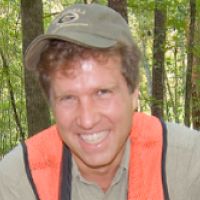Thompson et al., 2019
Controls of iron abundance and crystallinity on organomineral associations under contrasting long-term land use
Thompson, Aaron, Elizabeth K Coward, Daniel Markewitz, Daniel deB. Richter, Allan R Bacon, Alain F Plante (2019)
American Geophysical Union Fall Meeting, San Francisco, CA, December 9-13, 2019
-
Calhoun, Luquillo, INVESTIGATOR, COLLABORATOR
-
Luquillo, GRAD STUDENT
-
Calhoun, INVESTIGATOR
-
Calhoun, INVESTIGATOR
-
Calhoun, INVESTIGATOR
-
Christina, Luquillo, INVESTIGATOR, COLLABORATOR
Abstract
Anthropogenic land use changes have resulted in substantial losses of organic carbon (C) from terrestrial ecosystems, and alteration of forested areas is well understood to impact surface soil properties and soil carbon stocks. Land use-driven modification of subsurface horizons is also likely, but remains poorly constrained. In particular, we propose that land use is likely to affect both soil C and the most reactive mineral phases -- short-range-ordered (SRO) iron (Fe) phases -- at depth and hence the fate of subsurface organomineral associations may be sensitive to land use change. To evaluate the effects of land use change on organomineral associations, we sampled 1 m profiles under under cultivated agricultural fields, secondary pine forests and undisturbed reference hardwood forests situated within the Calhoun Critical Zone Observatory (CCZO). Inorganic selective dissolutions were paired with elemental, particle size and surface area analyses to quantify extractable iron and associated C. Inorganic dithionite extraction was used to quantify non-silicate Fe oxides, hydroxides, and oxyhydroxides derived largely from pedogenesis, acidified hydroxylamine and ammonium oxalate extractions targeted SRO mineral phases, and sodium pyrophosphate solubilized chelated and dispersable Fe phases. We found shifts to pasture and pine plantations only impacted (decreased) total C stocks in the surface horizons (0 - 20 cm). However at depth, land use altered both total Fe and targeted Fe-C associations differentially in the pine and pasture systems. Secondary pine forest subsurface soils contained an abundance of SRO and pedogenic Fe-associated C, while pasture soils accrued chelated and dispersable Fe and associated C. In contrast, selectively extracted Fe and C were similar across land use in surface horizons, with only 10 – 20% of C found to be mineral associated, and the majority in organic complexes and dispersible Fe and C. This apparent disconnect between surface and subsoil C appears to be driven by an enrichment of Fe phases at depth and perhaps differential delivery of C to the subsurface across vegetation types.
Citation
Thompson, Aaron, Elizabeth K Coward, Daniel Markewitz, Daniel deB. Richter, Allan R Bacon, Alain F Plante (2019): Controls of iron abundance and crystallinity on organomineral associations under contrasting long-term land use. American Geophysical Union Fall Meeting, San Francisco, CA, December 9-13, 2019.
 This Paper/Book acknowledges NSF CZO grant support.
This Paper/Book acknowledges NSF CZO grant support.
Explore Further






